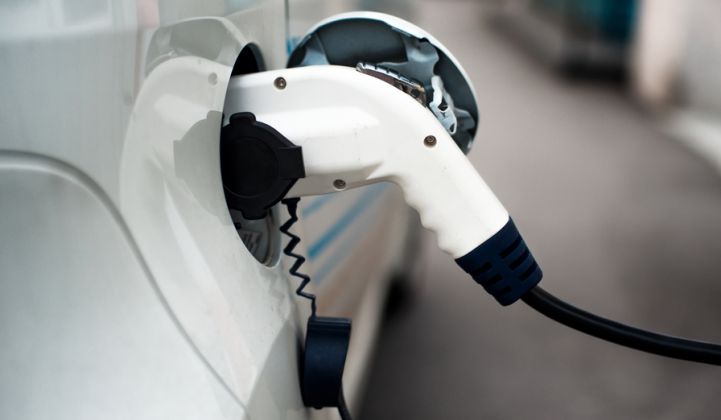Southern California Edison is the latest utility to pilot the use of electric vehicles for grid services.
SCE is using 80 Level 2 chargers at different utility facilities to test various pricing options for demand response events. As with many early-stage utility pilots, employees will be the test subjects. SCE would not say how many of its employees drive electric vehicles, but it has more than 36,000 EV owners in its territory as of January.
Electric vehicles are an appealing asset for utilities to interact with. Since each car has an electrical load that can be nearly as great as that of a house, utilities are interested in manipulating charging so that EVs can draw power when it's best for the grid while also ensuring the customer has a full battery when needed.
“This is the largest deployment of charge stations enabled for demand response today,” said Brett Hauser, CEO of Greenlots, the company that will provide the smart charging platform for the pilot.
SCE employees with electric vehicles can opt in to demand response when they plug in at one of the 80 chargers, which are provided by the company EVSE LLC. They are given three options to choose from. In the future, the options could all be pushed to a mobile app.
The first option is to get a full charge, no matter what the price. The second option is to allow charge curtailment if there is a demand response event. The third option is to just have a Level 1 charge throughout the day.
The pilot went live in January and will continue to test different options with the employees through the end of the year. Hauser said Greenlots and SCE can push any type of price signal a day ahead or an hour ahead with many different parameters.
Currently, employees pay an hourly rate. SCE did not disclose the exact price points that the pilot was testing.
The communication system is based on OpenADR protocol, which is emerging as the standard of choice for demand response applications in the U.S. The idea is to allow various types of chargers to be used for a program like this, rather than just chargers from one particular vendor. “You should be able to mix and match,” said Hauser.
Farther north in California, Pacific Gas & Electric is testing demand response capability via onboard telematics with BMW. Greenlots is also working with Powertech Labs, a subsidiary of BC Hydro, to test demand response for residential charging.
Other utilities, such as Con Edison and Pepco, are testing demand response opportunities with electric vehicles. Batteries in the cars could also play in ancillary services someday; ERCOT tested a fleet of electric delivery trucks for frequency regulation last year.
The long-term goal is using an electric vehicle as a grid asset, and potentially even a power source in the case of emergency for the connected home. For now, utilities are working out the kinks of delivering a demand response signal to automobiles, as well as testing drivers' appetite for allowing the utility to draw down batteries.
It’s not quite the sophisticated vehicle-to-grid system people in the industry like to talk about, but it’s an important first step.



